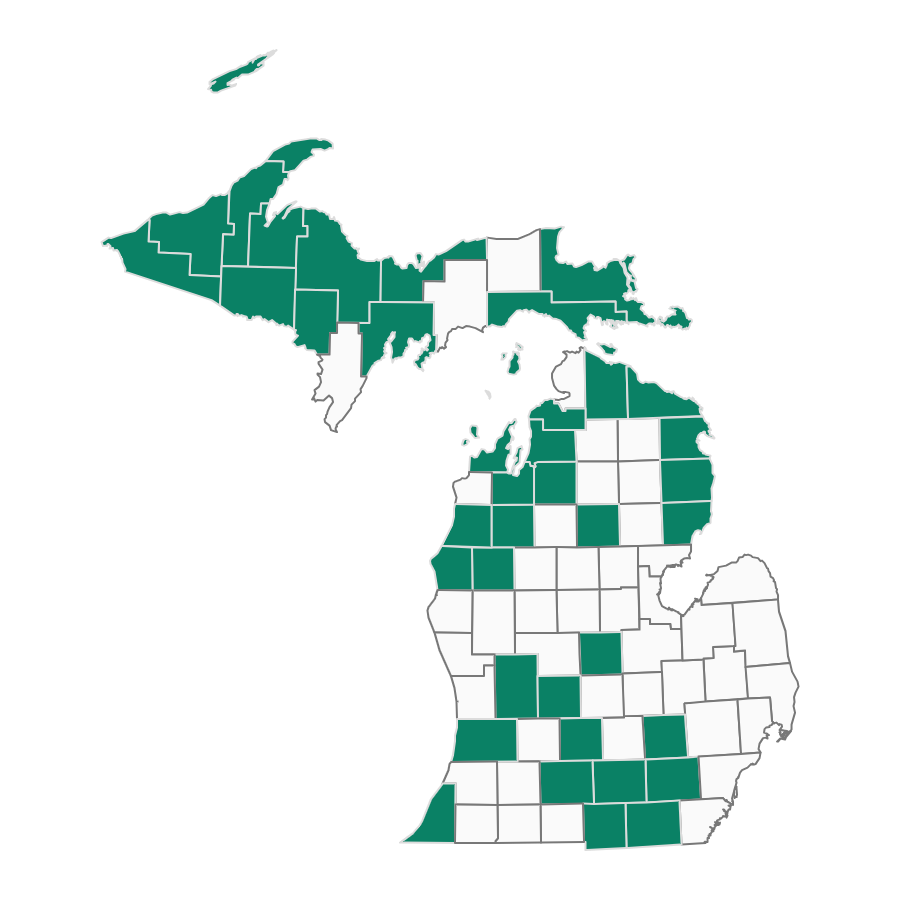2025 MURAL SPECIES!
northern
long-eared bat
Ojibwe: Paakwaanaashiinh
Latin: Myotis septentrionalis
STATUS:
US STATUS: LT - Listed Threatened
MI STATUS: E - Endangered (Legally Protected)
Description:
Northern long-eared bat fur ranges from medium to dark brown dorsally and tawny to pale brown ventrally. As its name implies, the key distinguishing feature of the northern long-eared bat is the presence of a long outer ear that tapers to a rounded or pointed tip. When laid forward, the pinna extends 1/3 cm or more beyond the nose. The bat also has a long, slender tragus that is more than half the length of the pinna. Northern long-eared bats are a medium-sized bat with body length of 7.6 to 9.4 cm and a wingspan of 22.9 to 26.7 cm. Forearm length ranges from 3.3 to 3.5 cm and body mass ranges between 4.9 to 7.9 grams.
Habitat and Occurrence
If you’re looking to find a Northern Long-eared Bat for yourself, check within the following ecosystems within the green counties on the map!
All information on this page is generously provided by the Michigan Natural Features Inventory (MNFI). For more information about Northern Long-eared Bats - visit the species description here: mnfi.anr.msu.edu/northern-long-eared-bat. To learn more about Michigan’s biodiversity, ecological communities and natural heritage, visit mnfi.anr.msu.edu
get involved with northern
long-eared bat conservation!
While there are currently no Community Science projects specifically operating to benefit the preservation of Northern Long-eared Bats in Michigan, there are many organizations who work to protect the habitats where it resides! Volunteer with some of these organizations and help protect the habitat that Northern Long-eared Bats need in order to survive.
report an observation
MNFI stewards the Michigan Natural Heritage Database and track observations of some of Michigan’s rarest forms of life to fully understand the population and range of rare species to protect biodiversity in Michigan. If you have encountered a Northern Long-eared Bat, you can share the location information with these trusted conservation professionals here: mnfi.anr.msu.edu/species/report


